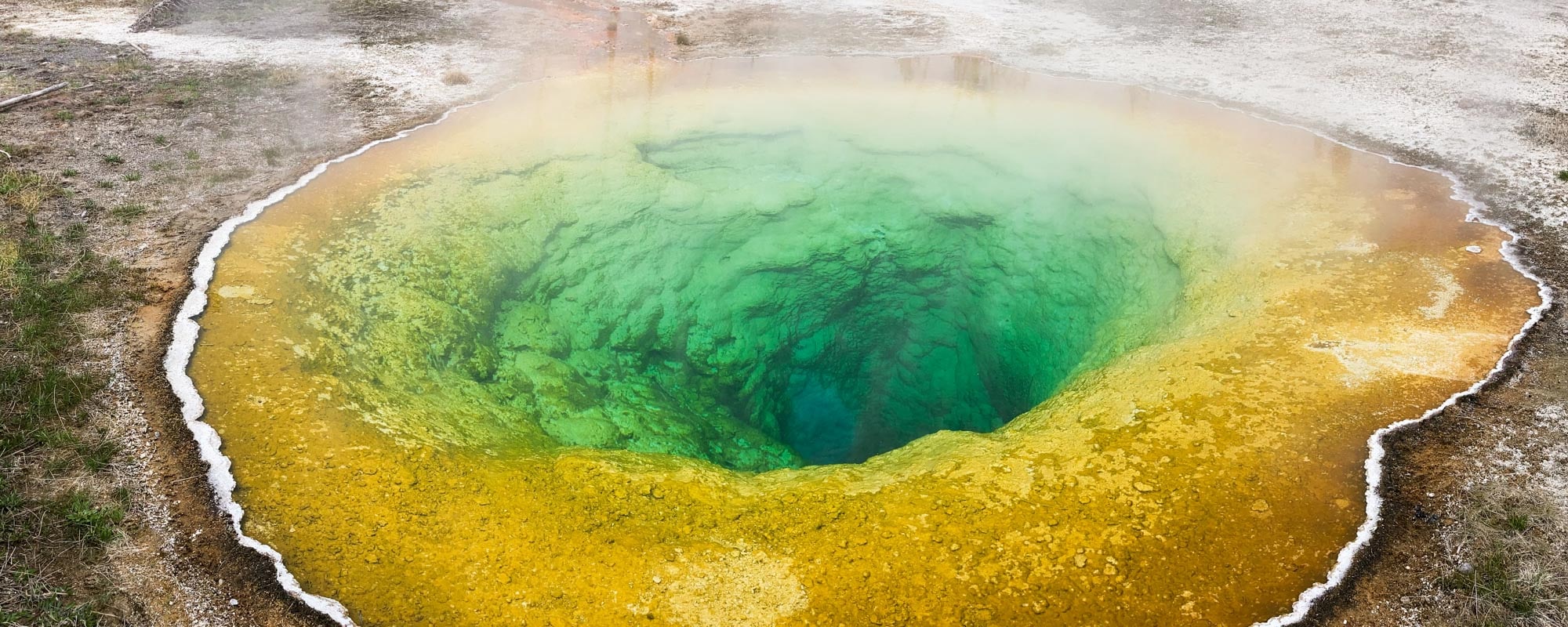The world’s oldest national park and a UNESCO World Heritage Site, Yellowstone National Park is home to over 10,000 hydrothermal features, from geysers to fumaroles to hot springs, more than the rest of the world combined. The park is also a refuge for an abundance of megafauna, including bison, grizzly bears, moose, bighorn sheep, elk and wolves.
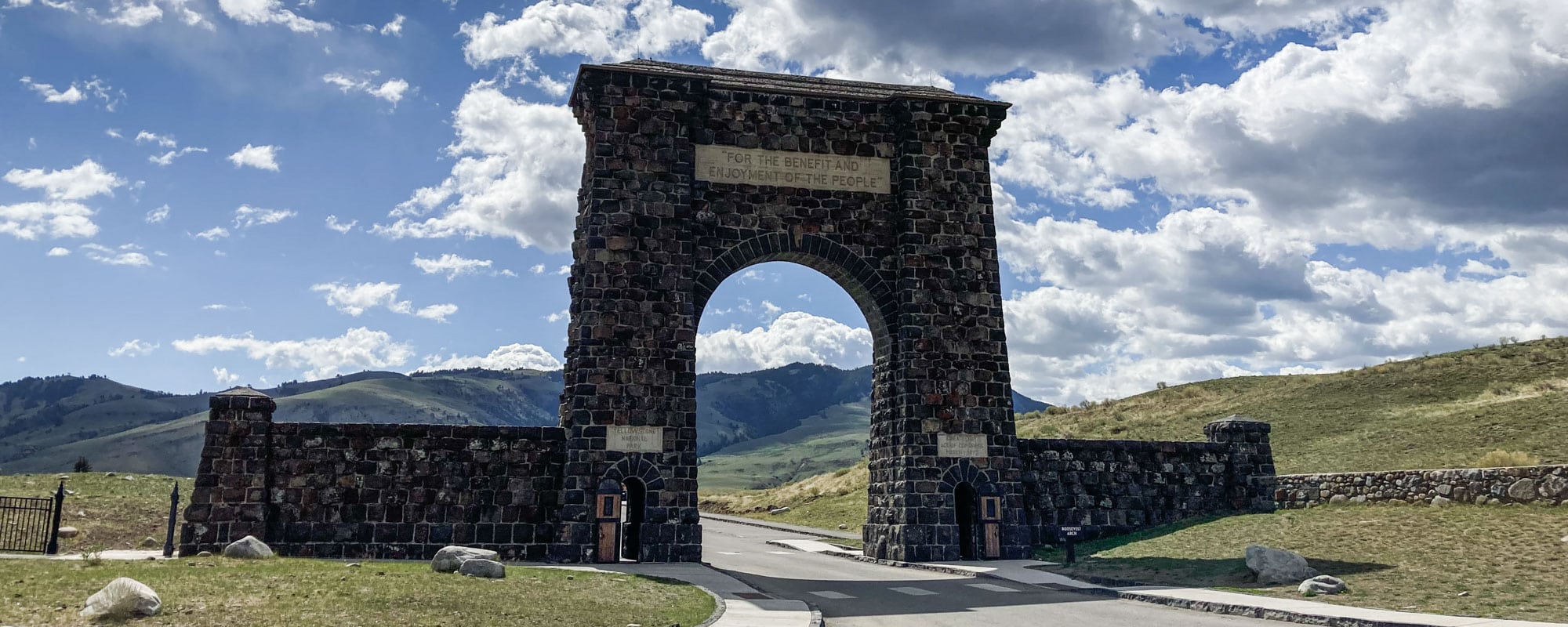
In the middle of Yellowstone National Park, a gigantic volcano slowly breathes—it literally rises and falls. The Yellowstone Volcano erupted about 650,000 years ago, leaving behind a massive 30-by-45-mile caldera. This volcanic activity still fuels and powers the countless volcanic features for which the park is so famous.
It is those unique features, especially iconic geysers like Old Faithful, that made the U.S. Congress set aside Yellowstone as America’s and the world’s first national park in 1872.
You can explore a number of different geyser basins around Yellowstone, including the Norris Geyser Basin, the Lower, Midway and Upper Geyser Basins, and the West Thumb Geyser Basin. Mammoth Hot Springs in the north is home to stunning travertine terraces created by myriad hot springs.
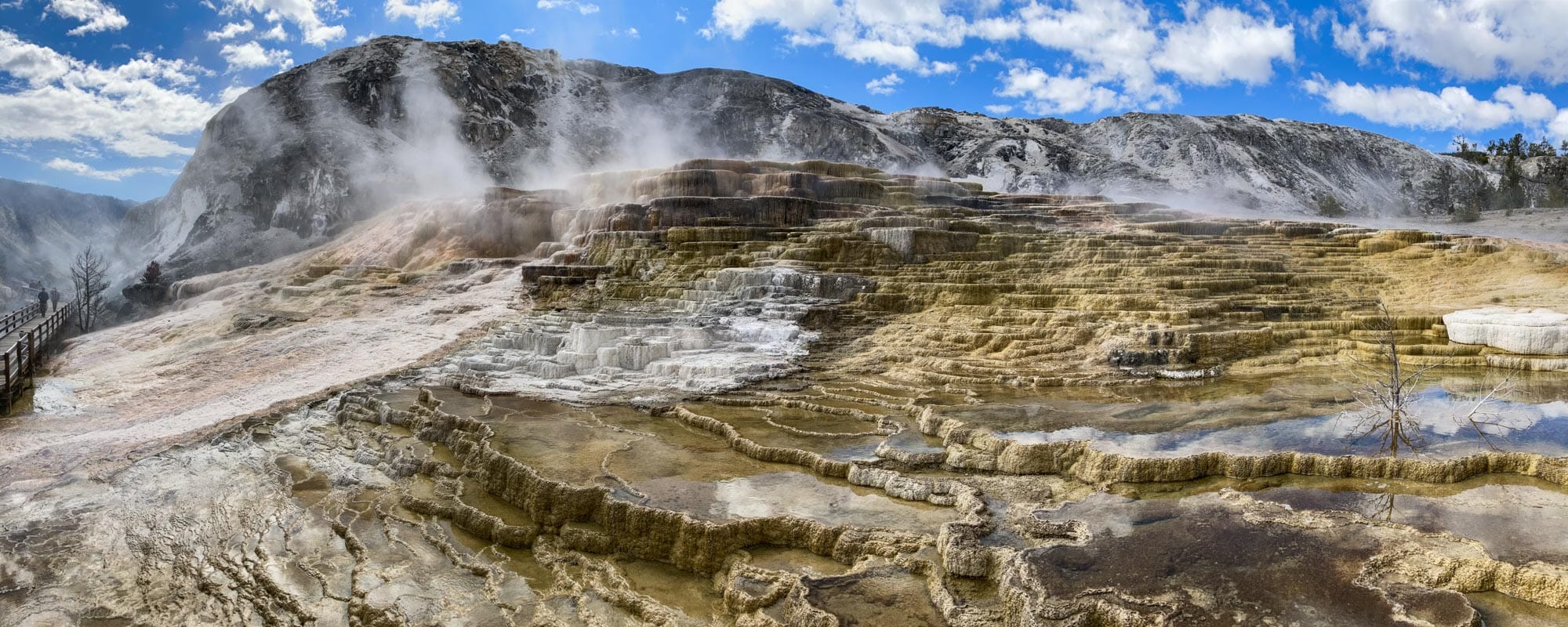
Although most renowned for its erupting geysers and multi-colored hot springs, Yellowstone National Park is much more than hydrothermal action. The park encompasses a variety of ecosystems, from the near-desert-like hills at the North Entrance to the subalpine vegetation in its towering mountain ranges.
Yellowstone Lake is the largest high-elevation lake in the United States, a huge body of water that’s covered with ice about half of the year, while underwater geysers and hot springs keep some pockets ice-free.
Flowing north from Yellowstone Lake, the Yellowstone River meanders through the wildlife-rich Hayden Valley before dropping spectacularly into the Grand Canyon of the Yellowstone at the Lower Falls.
In Yellowstone National Park’s remote northeastern corner, the sprawling Lamar Valley is often referred to as the “American Serengeti.”
Here, visitors can see the largest herds of wild elk and bison in America—Yellowstone is the only place in the country where bison have lived continuously since prehistoric times—as well as pronghorn, black and grizzly bears, and gray wolves, which were reintroduced in the park in the mid-1990s.
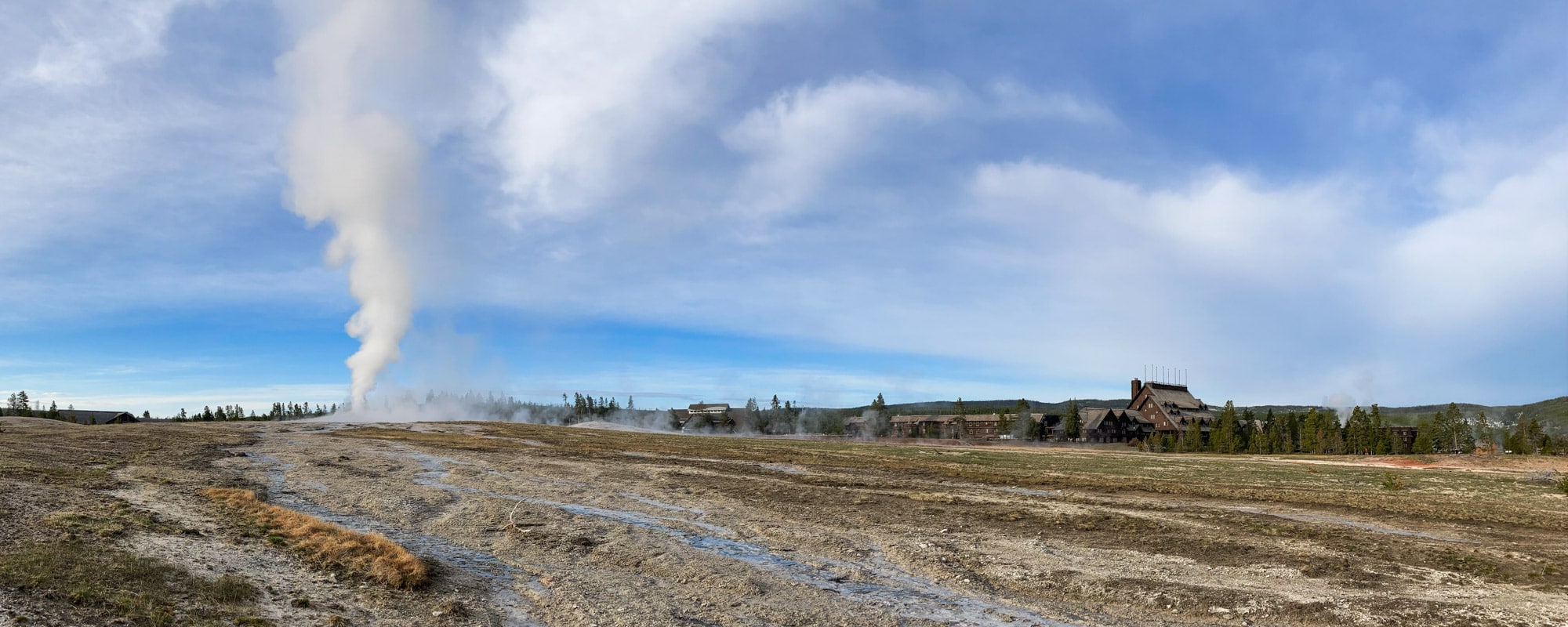
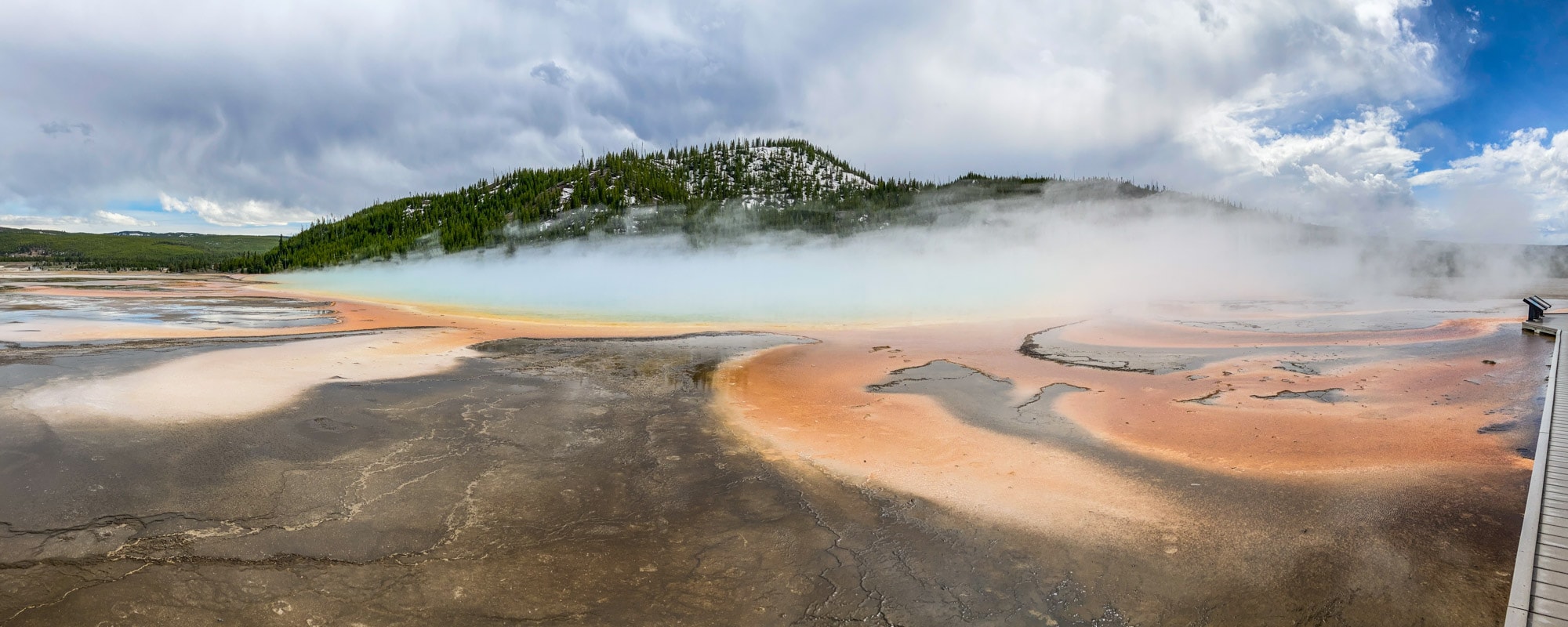
Highlights of Yellowstone National Park
This Yellowstone National Park information page contains affiliate links. You can read more about our Terms of Use / Disclosure here.
The second-largest national park in the contiguous United States, after Death Valley, Yellowstone National Park is jam-packed with highlights, activities and attractions. Because this is such a huge park, however, you will need to do some driving to see it all.
A trip to Yellowstone deserves at least five days of actual park exploration—you could literally spend months in this sprawling park and still find new things to see and do.
Consider spending a full week here. Anything shorter and you’ll be rushing around, not really doing Yellowstone’s majesty any justice.
Below are the top sights in Yellowstone National Park (you really shouldn’t miss the attractions in bold).
- Mammoth Hot Springs
- Roosevelt Arch
- Wildlife viewing in the Lamar Valley
- Norris Geyser Basin
- Grand Canyon of the Yellowstone
- Mount Washburn
- Wildlife viewing in the Hayden Valley
- Grand Prismatic Spring
- Old Faithful & Old Faithful Inn
- Upper Geyser Basin
- West Thumb Geyser Basin
- Yellowstone Lake
- Fishing Bridge
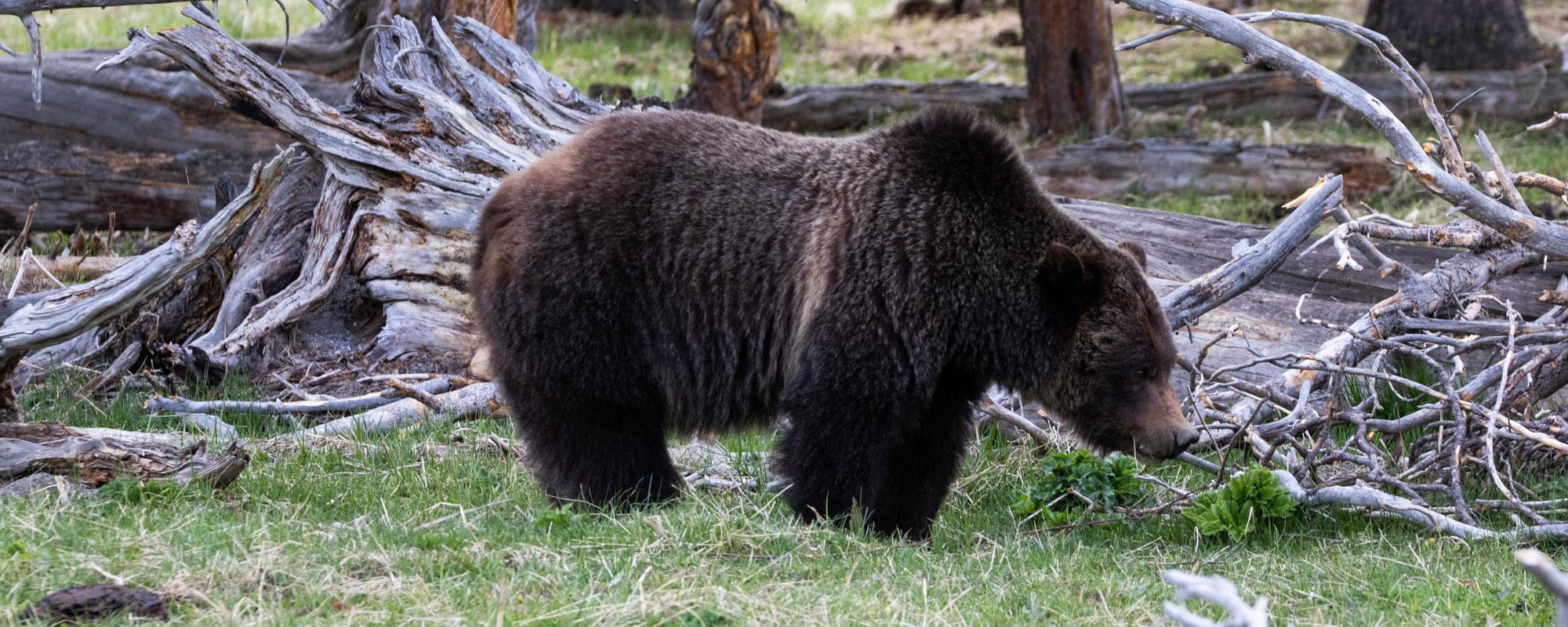
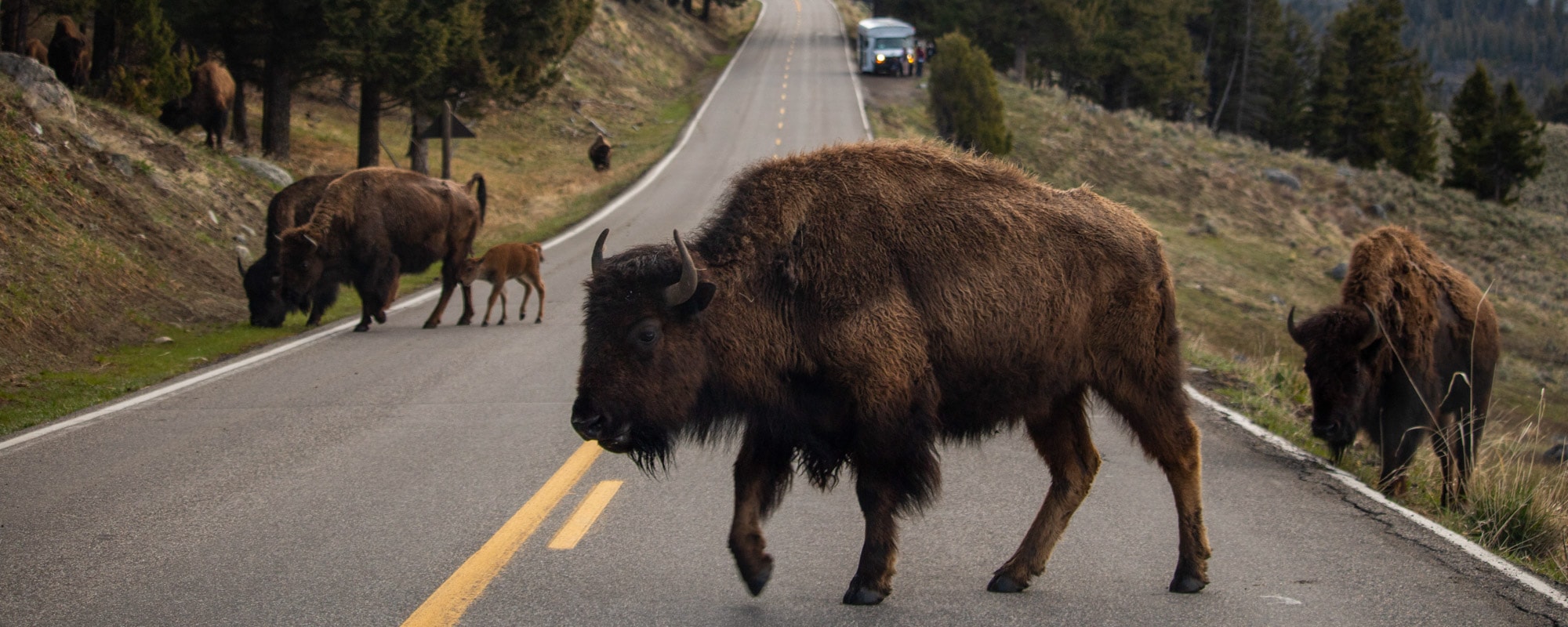
Accommodation Near Yellowstone National Park
Several large campgrounds dot Yellowstone National Park, five of which have more than 250 sites, while smaller campgrounds offer a more secluded and quiet camping experience. Additionally, Yellowstone also has one of the highest numbers of lodging options in the national parks.
From Mammoth Hot Springs Hotel & Cabins and Roosevelt Lodge in the north to Canyon Lodge, the Lake Lodge and Lake Hotel in the middle, and Grant Village Lodge, Old Faithful Lodge and the iconic Old Faithful Inn in the south, visitors can stay close to most of the park’s attractions, provided they plan their trip well in advance.
In total, there are no fewer than nine lodges in Yellowstone National Park, offering both hotel-style and cabin accommodation, with a combined number of 2,000+ rooms.
You can find more information and make reservations on the website of Yellowstone National Park Lodges: https://www.yellowstonenationalparklodges.com/
The towns surrounding the park also offer a variety of accommodation options. Gardiner is a popular gateway to the northern part of Yellowstone, while tiny Cooke City is the nearest town to northeast Yellowstone.
The town of West Yellowstone is the largest urban center just outside of the park, home to all kinds of services, accommodations, shops and restaurants.
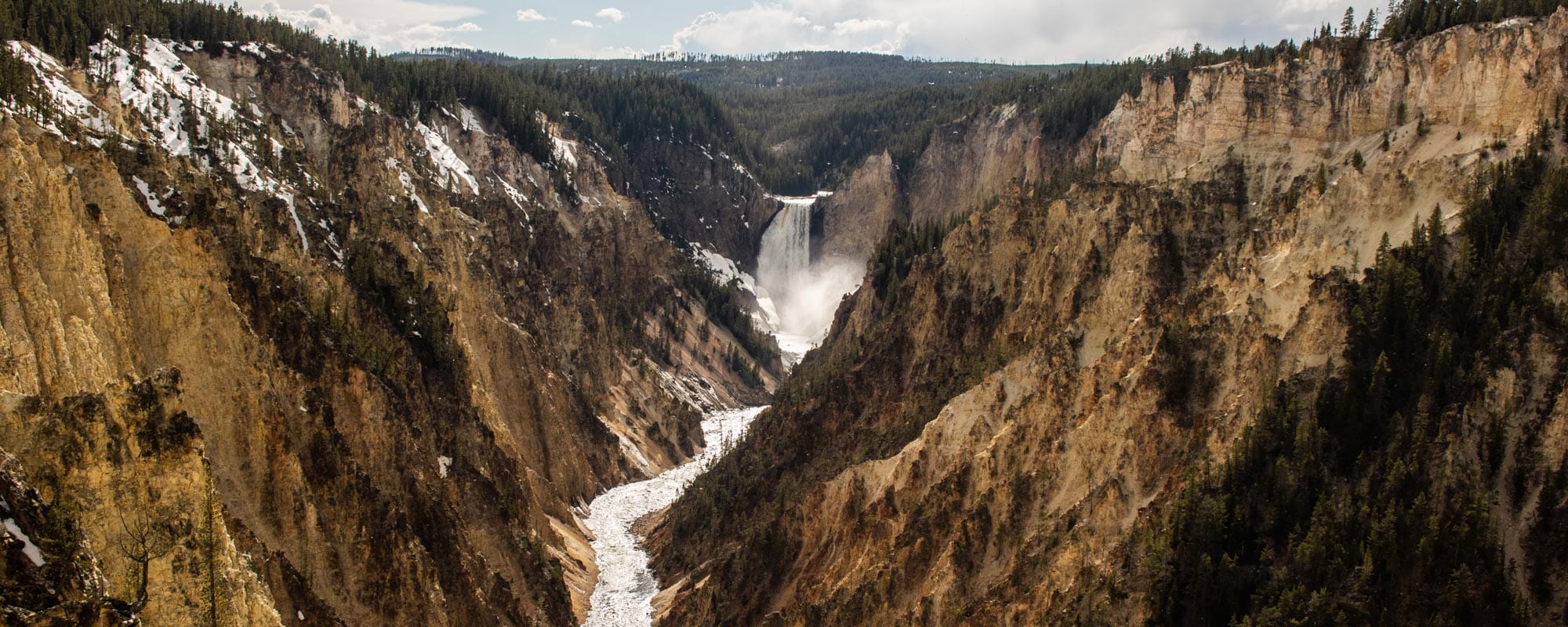
Useful Info
Location: Northwestern Wyoming, southeastern Idaho, southwestern Montana
Nearest Towns: Gardiner, Cooke City and West Yellowstone
Area: 3,472 square miles (2,221,766 acres)
Annual Visitors (2022): 3,290,242
Features: Most hydrothermal features in the world, including geysers, mud pots and hot springs, as well as sprawling wilderness areas, and abundant wildlife such as bison, wolves, grizzly bears and bighorn sheep
Top Attractions: Old Faithful and Old Faithful Inn, Grand Canyon of the Yellowstone, Mammoth Hot Springs, Lamar Valley, Hayden Valley, West Thumb Geyser Basin, Grand Prismatic Spring, Yellowstone Lake, Roosevelt Arch
Popular Activities: Hiking, wildlife watching, scenic drives, exploring hydrothermal basins, cycling, camping, boating, (fly) fishing and photography
Suggested Stay: 5-6 days
Campgrounds:
- Bridge Bay Campground (432 sites)
- Canyon Campground (273 sites)
- Fishing Bridge RV Park (310 sites)
- Grant Village Campground (430 sites)
- Indian Creek Campground (70 sites)
- Lewis Lake Campground (84 sites)
- Madison Campground (276 sites)
- Mammoth Campground (82 sites)
- Norris Campground (111 sites)
- Pebble Creek Campground (27 sites)
- Slough Creek Campground (16 sites)
- Tower Fall Campground (31 sites)
More Information: National Park Service
Nearby National Parks:
- Grand Teton National Park, Wyoming
- Glacier National Park, Montana
- Theodore Roosevelt National Park, North Dakota
- Wind Cave National Park, South Dakota
- Badlands National Park, South Dakota
